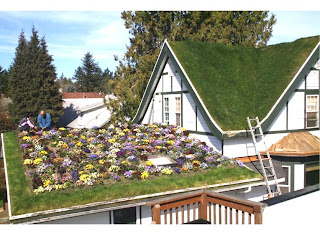The last aspect to discuss in our quality building envelope is the roof. This is an important aspect because that is where most of the heat escapes because of air infiltration and lack of insulation. Two good options for increasing the efficiency of your home is using energy efficient trusses and the second, more expensive but also ingenuous is a green roof.

An easy way to improve the efficiency of a home is to build the attic correctly. Attics need to be built so there is enough airflow for venting heat and moisture. There also needs to be enough room for correct levels of insulation to be installed. Energy efficient trusses allow you to achieve both of these. The difference between an energy efficient truss and a typical truss is the heel height. Standard trusses have approximately a 3 1/2" heel, while an energy efficient truss has up to an 18" heel. The extra height in the energy efficient truss allows for proper insulation to be filled all the way to the corner of the wall and it is relatively inexpensive.

Another thing to consider in being energy efficient is your roof finish. Dark roofing absorbs heat which heats the building up. By choosing a light colored roof it decreases the amount of heat you are absorbing into your home. The most eco-friendly, but more expensive option is a flat roof top garden using native plants. It is built using a standard metal frame, with corrugated metal roof top, weather proofing membrane, a layer of foam, another layer of weather proofing membrane and soil (4” is most economical). It is less likely to leak than any other roof because it is not exposed to elements, therefore it is less likely to crack and weather. The benefits are that it reduce heat island effect, insulates the building, is a wild life habitat, reduces and filters rain water, improve air quality, increase energy efficiency and lengthens life span of roof. The heat island effect is a phenomenon that occurs in developed areas where the replacement of natural land cover with paving, buildings, roads, parking lots, and other structures result in an increase in outdoor temperatures. In the United States it is estimated to cause an increase in temperature of between two and degrees. Do take into consideration that it is a newer building practice and not all county building codes allow them.


No comments:
Post a Comment